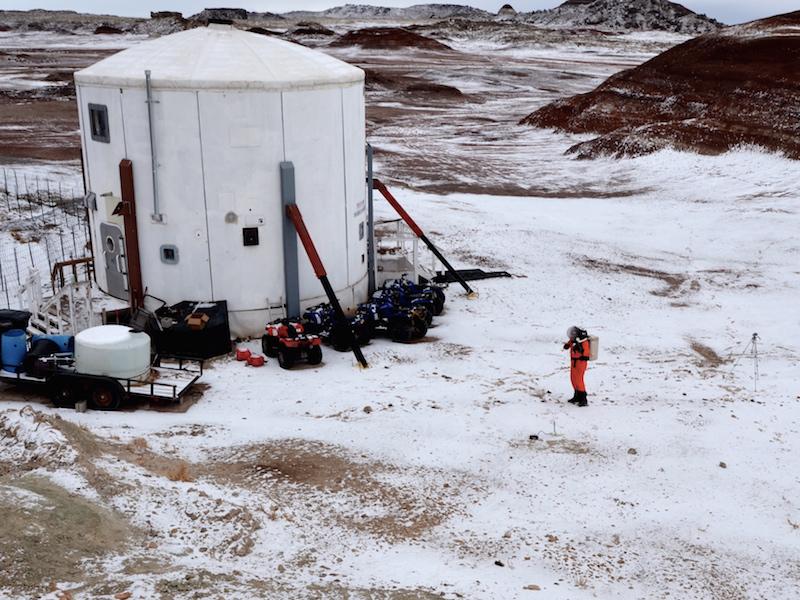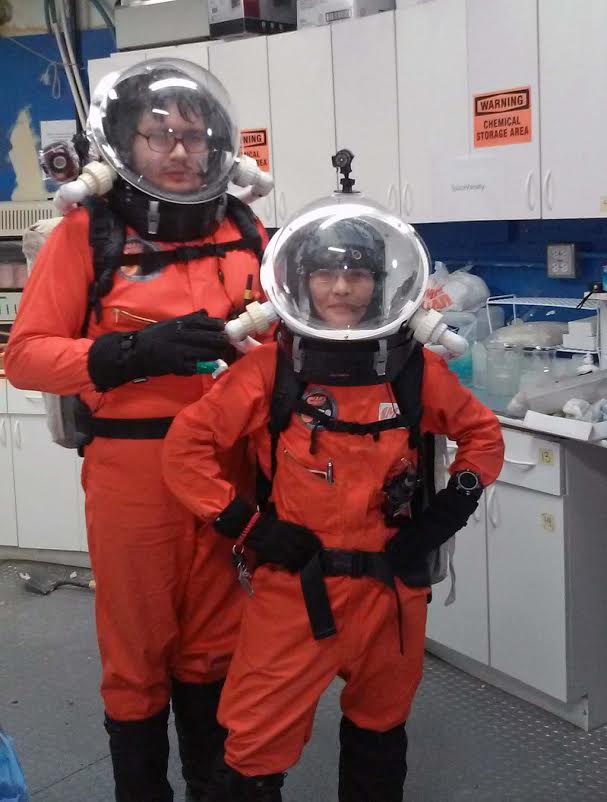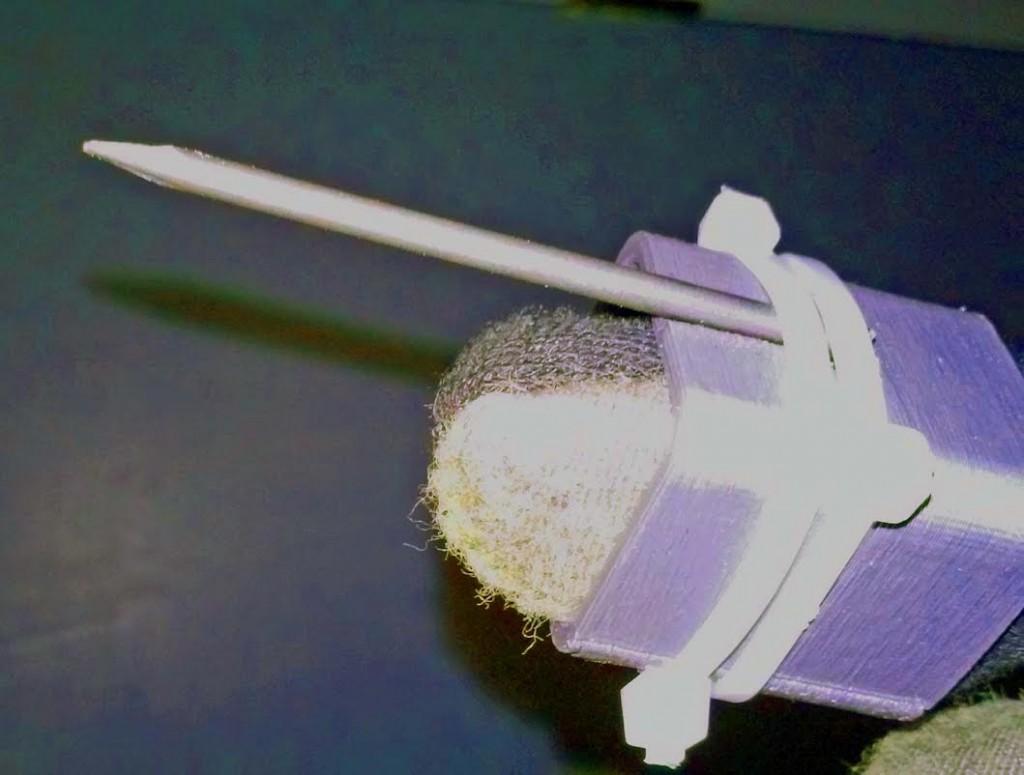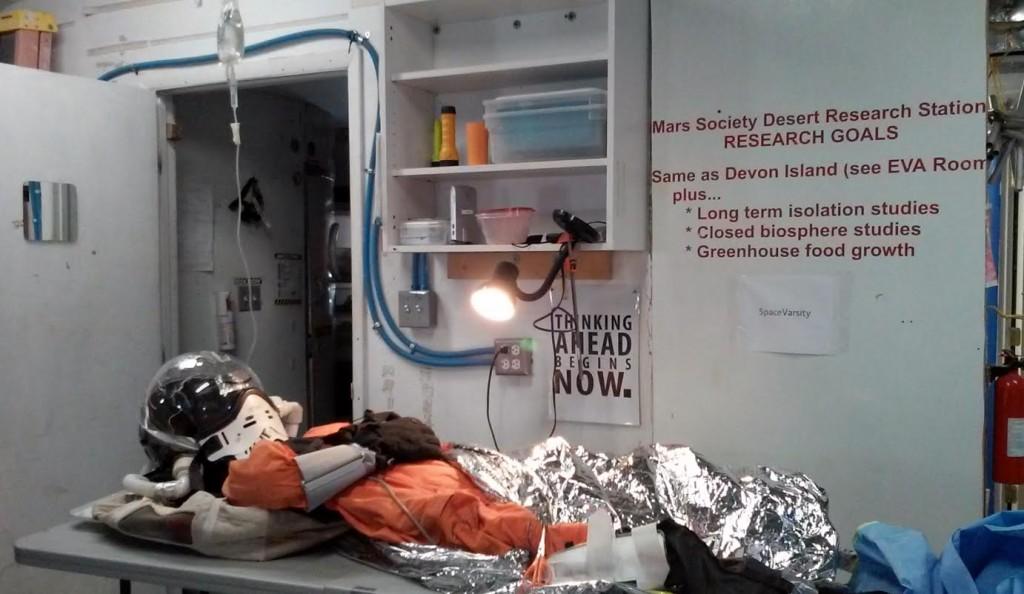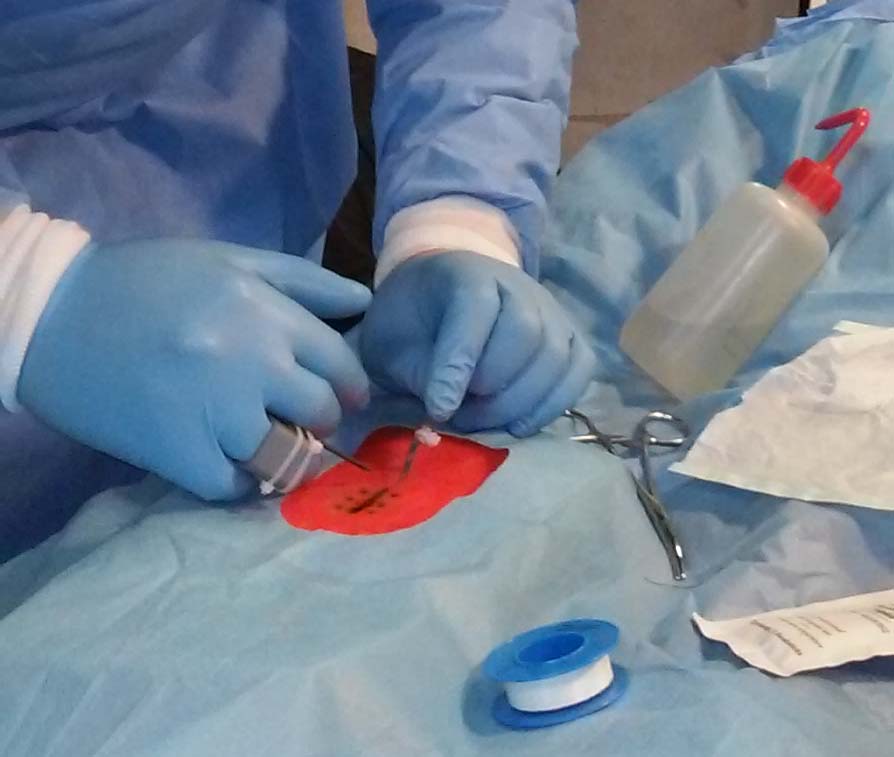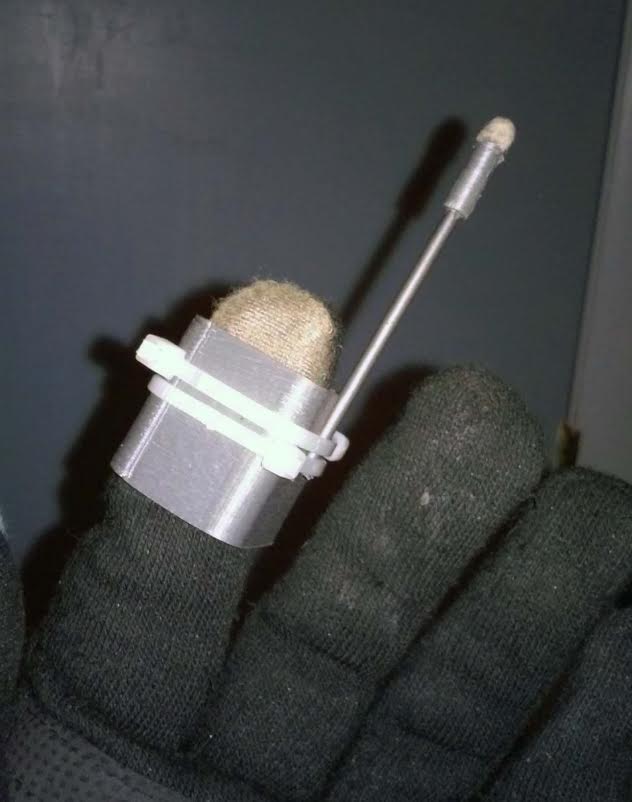Solar Powered 3D Printers on Mars? Researchers Successfully Test Feasibility of Printing Surgical Tools on Red Planet
Space exploration has always been fascinating to me. When I stop and think of just how vast our universe is, it makes me realize how small I actually am. Earth is a tiny little particle floating in a vast vacuum called space, much in the same manner as individual atoms are currently floating in Earth’s atmosphere. No matter how you look at it, in the whole scheme of things, we are extremely tiny, and perhaps even insignificant.
Technology is advancing at rapid rates, thanks to increasing capabilities of computers, the ability to share knowledge via the internet, and the growing adoption rate of robotic driven technologies such as 3D printing. The culmination of these advancements has led to exploration outside of the Earth’s atmosphere, and the idea that one day we may colonize other planets has suddenly become a realistic possibility.
This idea has led a group of researchers at MarsWithoutBorders (MWOB) to begin testing the feasibility of 3D printing surgical tools for telesurgery on Mars. The project, led by the Founder of MWOB, and Commander of MWOB Expedition One Crew 145, Susan Ip Jewell, MD, and MWOB Crew Engineer, Matteo K. Borri took place in a Mars Analog Simulation at Mars Desert Research Station situated in a remote desert location in Utah.
“It is really feasible to imagine use of 3D Printing technology, especially solar powered 3D printers and their uses for creating 3D printed surgical tools and other medical instruments for future Martian settlers,” Dr. Susan Jewell and Matteo Borri tell 3DPrint.com. “In fact, wherever humans live there will always be a need for medical care especially during space missions when there will be significant risks of injuries during planetary surface explorations and long-duration space missions with no access to synchronous telecommunications with the flight surgeons at Mission Control Center (there is an approx 20 minute delay in communications from Mars to Earth) and the urgent need to have immediate access to surgical and medical interventions to save the life of the injured astronaut or sick crew.”
The ability to 3D print these surgical tools in real time, on demand, and in situ will provide astronauts and space explorers with huge advantages over the technology being utilized today. These benefits include the reduction of payloads, increased safety by maintaining sterility and eliminating “shelf life,” reduction of costs for storage, and the potential to increase the effectiveness and efficiency of the tools and the operations they are used for.
In December 2014, the MWOB team (Crew 145), led by Dr. Susan Jewell (Principal Investigator), successfully tested the viability, feasibility, and utility of 3D printing at the Mars Desert Research Station. The study involved integrating 3D technology — including 3D printing — in training non-medical crew in simulated surgical procedures using tools created by 3D printers.
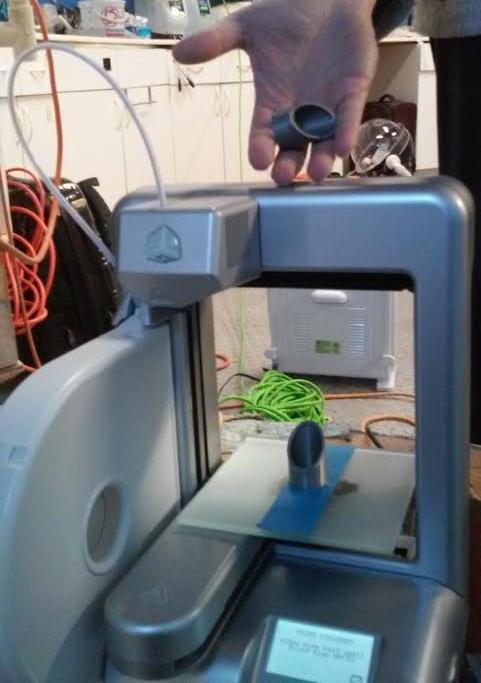 The 3D printer used for testing was a Cubify Cube FFF-based machine, but it ultimately will not be the same model used if one day humans do elect to 3D print tools on the surface of Mars.
The 3D printer used for testing was a Cubify Cube FFF-based machine, but it ultimately will not be the same model used if one day humans do elect to 3D print tools on the surface of Mars.
“[It] had many limitations,” Jewell told us. “We will be using an upgrade to a Rigidbot for the upcoming missions. It is made of metal, [is] easy to modify/repair and is open source. In addition, we plan to 3D print in metal and test other source materials.”
Ultimately, 3D printing in metal would go a whole lot further in the creation of surgical tools than using a simple plastic material like that used in this simulation. Another obstacle that Dr. Jewell and Borri realized is the fact that there will be no sufficient power source on the surface of Mars, other than the power provided by the sun. Because of this, Matteo Borri, who also happens to be the founder of Robots Everywhere, created a solar-powered system in order to drive the Cube 3D printer, and since the tests took place during winter time, the researchers could ensure that the solar powered system would also be feasible on Mars.
“The system worked with limitations since these were the worst days of the year for solar power (winter solstice), which was also intentional,” Borri tells 3DPrint.com. “[It used] 9V panels to get 27V, then used the existing power brick’s DC side as a capacitor bank and voltage clamp.”
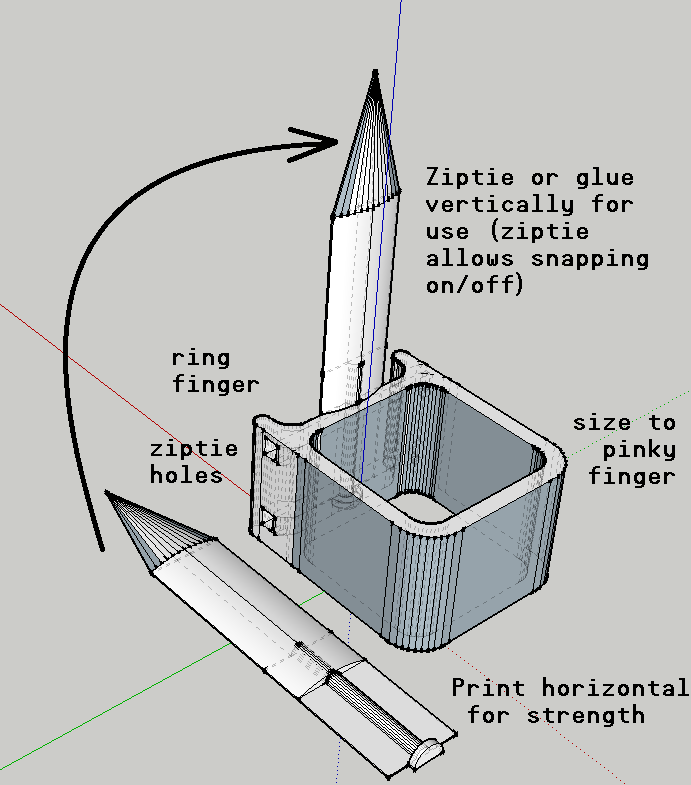 When it came to trying to figure which “tools” they would 3D print during the simulated mission, many ideas were considered. Spacesuits pose a significant challenge to astronauts, as they are extremely bulky, and provide less range of motion for anyone trying to precisely perform surgery in space. This was the driving influence behind a surgical tool that the crew decided to design and 3D print during their test mission. Any astronaut wearing gloves would tell you that feeling and moveability are extremely limited, thus Borri designed and 3D printed a “claw” that fits on the spacesuit’s pinky finger, and lays flat when it is not in use. The objective of the claw is to provide crew members with a tool that mimics their own fingernail, thus providing a solution to the fact that their real nails are covered by the spacesuit. A fingernail, although it seems quite mundane, actually can serve a lot of purposes during a mission, including opening rolls of duct tape, opening Ziploc bags, retrieving very small terrain samples, and adjusting Velcro straps.
When it came to trying to figure which “tools” they would 3D print during the simulated mission, many ideas were considered. Spacesuits pose a significant challenge to astronauts, as they are extremely bulky, and provide less range of motion for anyone trying to precisely perform surgery in space. This was the driving influence behind a surgical tool that the crew decided to design and 3D print during their test mission. Any astronaut wearing gloves would tell you that feeling and moveability are extremely limited, thus Borri designed and 3D printed a “claw” that fits on the spacesuit’s pinky finger, and lays flat when it is not in use. The objective of the claw is to provide crew members with a tool that mimics their own fingernail, thus providing a solution to the fact that their real nails are covered by the spacesuit. A fingernail, although it seems quite mundane, actually can serve a lot of purposes during a mission, including opening rolls of duct tape, opening Ziploc bags, retrieving very small terrain samples, and adjusting Velcro straps.
More significant to the study, though, was the fact that this tool was able to be utilized in the telesurgery simulations as well, allowing for crew members to complete surgical tasks without the need of an assistant. One example provided was the cutting and peeling of bandages in order to seal and cover wounds. During the mission the crew also demonstrated the ability to 3D print functional instruments, such as a scalpel handle and customized finger splints as well as other potentially useful tools.
The results of the testing were quite impressive, with tools being created and simulated telesurgery taking place. With the recent shipment of the Made in Space 3D printer to the International Space Station, 3D printing is well on its way to becoming a reliable tool for space exploration and the fabrication of tools/parts of all sorts. The ability to email a tool to astronauts or even settlers of another planet, will go a long way in cutting costs, and minimizing payloads for long missions. The added benefit of being able to fabricate emergency surgical equipment on demand, will help ensure safety of crew members and potential settlers of destinations such as Mars.
The simulated mission shows that 3D printing will be able to play a major role in space exploration and colonization of other planets. The question that remains, however, is, “How far off will it be before we actually begin sending men to Mars, subsequently using 3D printing technology in order to colonize the Red Planet?” I asked Dr. Jewell and Borri this exact question.
“Human-to-Mars missions and eventual colonization is inevitable for our species and will probably happen within our lifetime, ie, within 25-30 years — maybe even earlier with the exponential rise of technologies, the so called ‘Moore’s Law’ and the current rapid rate of new discoveries and innovations,” they told us. “It is an intrinsic part of our evolution, our Humanity, and our innate drive to expand and explore the ‘Unknown’ — driven by our human “curiosity.’ It takes the ‘true’ pioneers, visionaries and explorers — the ‘out-of-the-box’ thinkers — who will take humans beyond Earth’s cradle and finally open up the vast Universe to the millions of terrestrial inhabitants. 3D printing technology is only touching the ‘tip of the iceberg’ of what we are capable of imagining and creating out of our Minds. And who knows what the future holds, but it is exciting to envision that maybe by the time the Martian ‘human’ colonists settle on the Red Planet we might be using 6D-, 8D-printing or even the possibility of a totally new different ‘still yet to be discovered’ technology for printing our surgical tools.”
We have seen the mention of 4D printing in the past — self-assembling 3D printed objects — so the potential exists for further innovation and perhaps technology that will be considered 5D, 6D, 7D, and even 8D printing in the future. For now though, 3D printing is the technology that futurists are envisioning as one of the many means for colonization of other worlds.
What do you think? Will we one day soon colonize Mars and other planets with the help of 3D printing? If MarsWithoutBorders has anything to say about it, that answer will be an emphatic “Yes!” Discuss the potential that 3D printing provides for creating surgical tools for crew members, in the 3D Printed Surgical Tools on Mars forum thread on 3DPB.com.
[Note: Images were used by permission of Mars Without Borders, and are strictly prohibited to be used without expressed written permission on behalf of MWOB. Image Source: Dr. Susan Jewell/MWOB ]
Subscribe to Our Email Newsletter
Stay up-to-date on all the latest news from the 3D printing industry and receive information and offers from third party vendors.
Print Services
Upload your 3D Models and get them printed quickly and efficiently.
You May Also Like
Johns Hopkins University Researchers Develop HyFAM Technology
Two scientists from Johns Hopkins University, Nathan C. Brown and Jochen Mueller, have developed a hybrid manufacturing technology they call HyFam, or Hybrid Formative Additive Manufacturing. Their work on this technology...
3D Printing G-Code Gets an Upgrade: T-Code
Good old G-Code still manages many 3D printers, great and small. Just like the STL, it’s a standard that enables collaboration while also holding the additive manufacturing (AM) industry back....
AM Rewind: The Biggest News and Trends of 2024
After a sluggish 2023, driven by persistent inflation and geopolitical tensions, 2024 has seen some recovery. Economic growth climbed from about 2.8 percent in 2023 to a modest 3.2 percent...
Metal Wire 3D Printer OEM ValCUN Announces Plans for 2025 Expansion
ValCUN, a Belgian original equipment manufacturer (OEM) of wire-based metal additive manufacturing (AM) hardware, has announced that the company has entered the next phase of its growth trajectory, making key...


